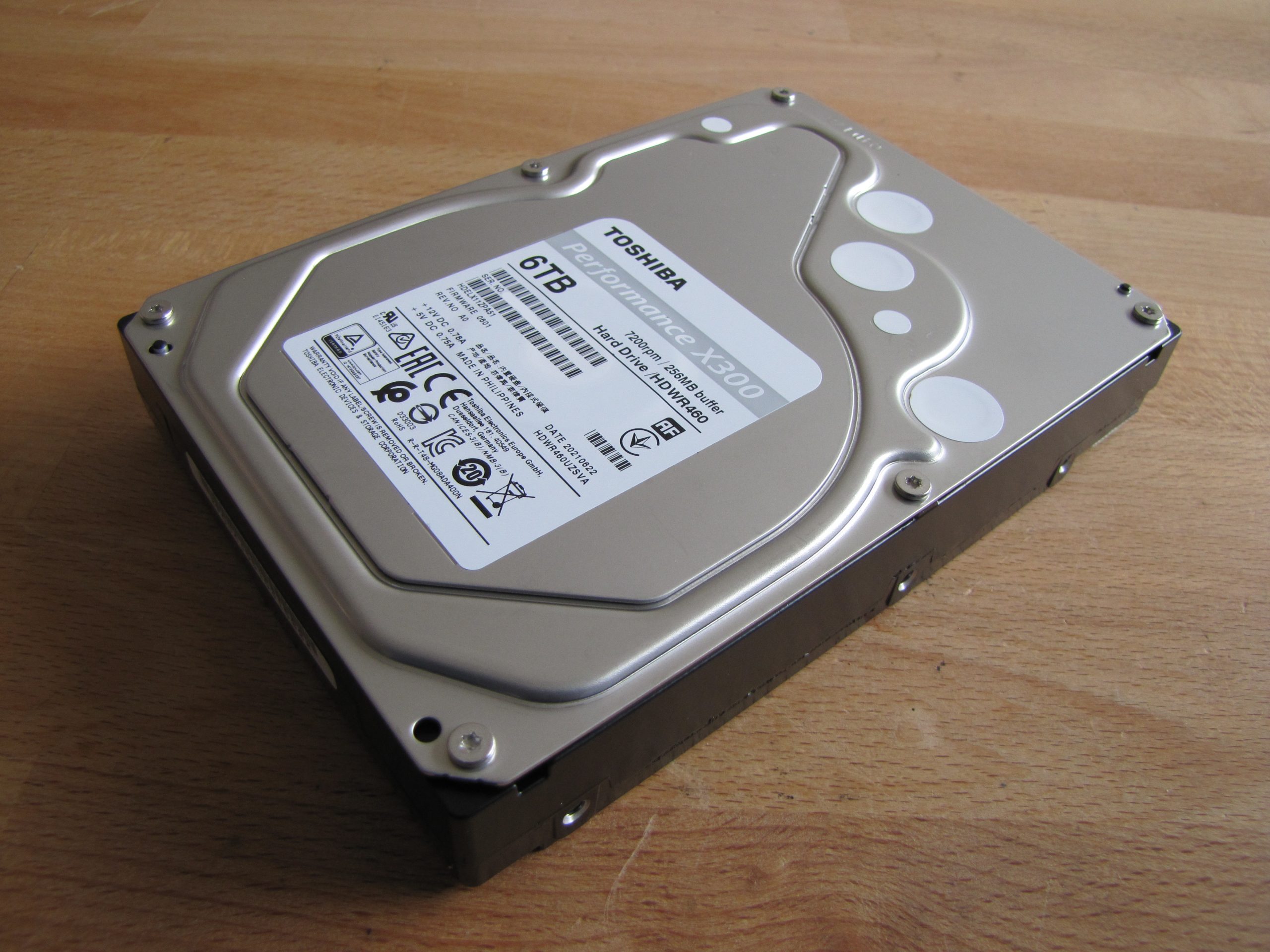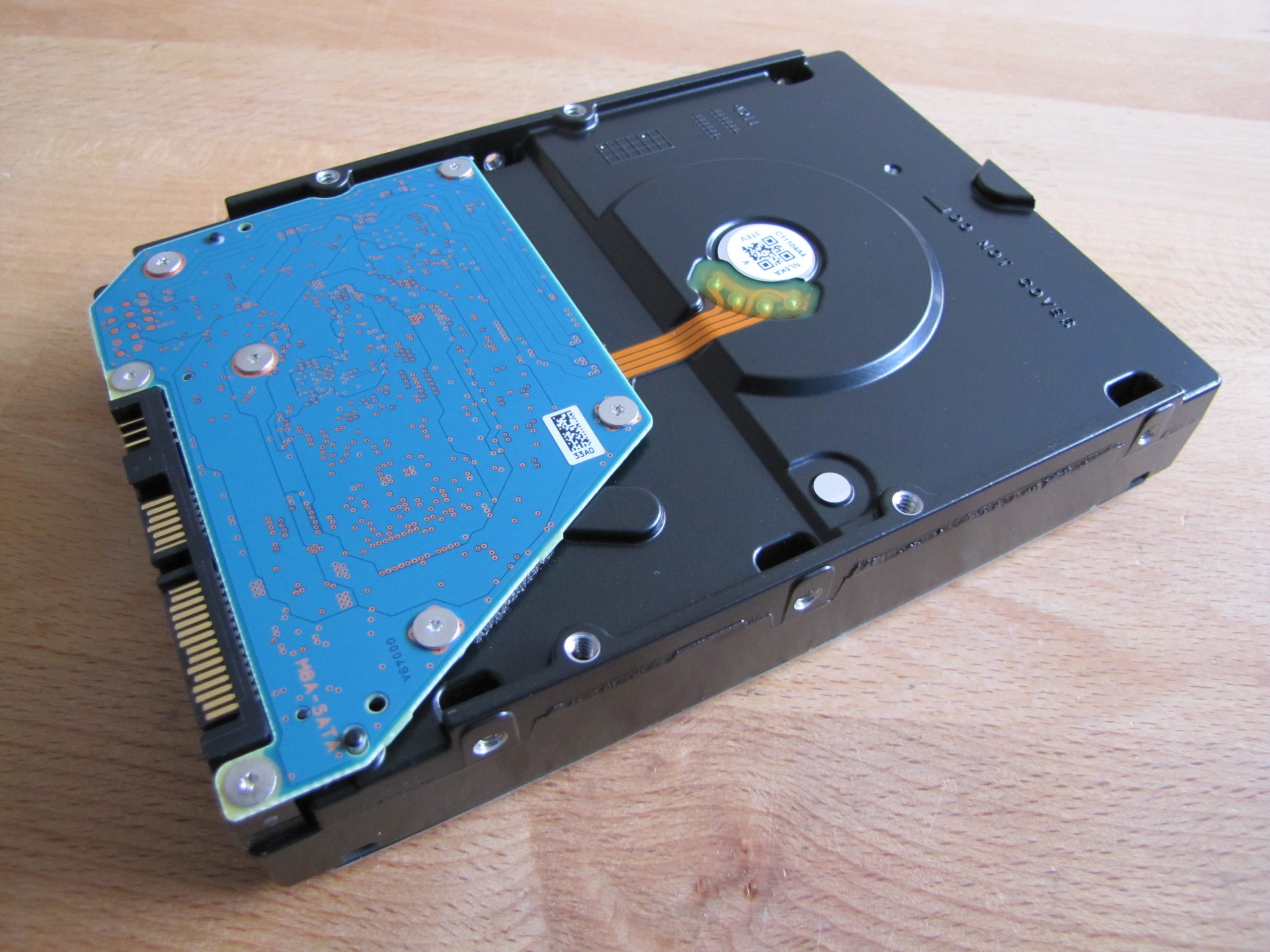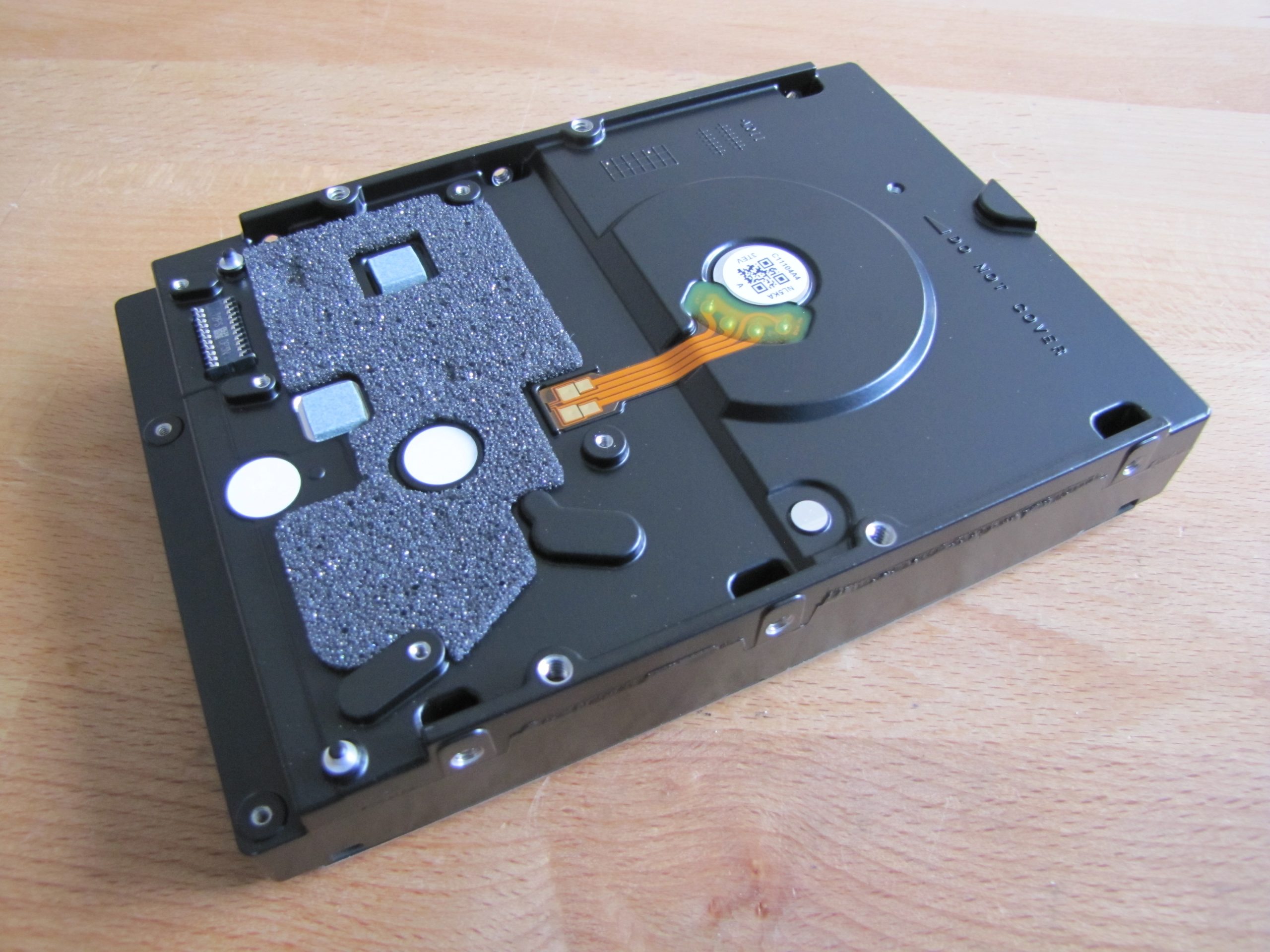The X300 range is firmly based on Toshiba’s native drive designs, carried on from the days of their acquisition of Fujitsu’s disk drive division. Coming in a range up to 18TB as of the time of this post, the HDWR460 is one of the lower end options, just above the lowest capacity 4TB HDWR440.
How does the HDWR460 perform and is it still a good choice compared to options from Western Digital and Seagate? The underdog in Toshiba may be the best bet.
Note: This drive’s serial number has been removed for this post.

Drive Attributes ------------------------------------------ Toshiba X300 Performance HDWR460 ------------------------------------------ Capacity 6TB Mfc Date 2021-06-22 Format 3.5" Interface SATA Platters 4 Heads 8 Cache 256MB RPM 7200 Protocol Serial-ATA/600 Origin Philippines (TSDP, ex-FCPP) ------------------------------------------
Using 1.6TB per-platter disks, it means this drive utilises some short-stroking, which is a bit of a shame. This is one of those points where one craves the day when Toshiba will refresh these to a three 2TB per-platter CMR disk configuration. Alas, for the time being, 6TB drives with 2TB per-platter configurations are limited to ex-Hitachi HDA developments such as with the HDWD260, using dreaded SMR. Seagate and Western Digital options are fairly limited for 2TB per-platter CMR models, thus this isn’t a hugely negative point for the time being.
Nonetheless, it means this drive should be a better performer compared to a six platter 1TB per-platter model like the HDWE160, or a five platter 1.33TB per-platter HDWR160.

As is usual with Toshiba’s drives using non-Hitachi derived designs, this was produced in the Philippines. It hails from a factory with a complex history, being previously under management by Fujitsu Computer Products Corporation of the Philippines (FCPP) until 2009, now being Toshiba Storage Devices Philippines Inc.
These are based on the MG08-D’s, as noted by the KCC code “MG08ADA400N”.


The backside of this drive is as one would expect from a four platter drive. The breather hole is completely recessed, unlike with the three platter HDWG440’s and the like.

Underneath the PCB, we’re met with a couple thermal pads for both the microcontroller and spindle motor control IC’s. The usual spindle motor contact pads and head-stack assembly pressure pin-block are present.


Marvell are the vendor for the microcontroller IC, Winbond for the 256MB of buffer memory and Smooth for the spindle motor controller. Nothing incredibly fancy, but the new Marvell logo is a fun thing to see.
Toshiba’s internal model numbers have remained fairly similar over the years, this PCB being denoted as “FKR3DC”.

Comparing Toshiba’s decade old platform with the MK1002TSKB, these are closer in general construction in constrast to the differing base-cast to the HDWG440’s as compared previously.
Both PCB’s use near-identical chip vendors and similarly tracked logic design (with some consolidation for space saving). They’ve clearly kept it true to the core design!

PCB shape differences aside, base construction remains incredibly similar with minor changes.

“DO NOT COVER” is short and sweet. Certainly more brief than Toshiba used to be with these.

Being a new drive, there’s not much to discuss. These are the sorts of attributes to expect from a standard 3.5″ drive from Toshiba these days.
This drive also supports device statistics extensions, thus the following output is something to expect too:
Device Statistics (GP Log 0x04) Page Offset Size Value Flags Description 0x01 ===== = = === == General Statistics (rev 3) == 0x01 0x008 4 5 --- Lifetime Power-On Resets 0x01 0x010 4 0 --- Power-on Hours 0x01 0x018 6 34842128 --- Logical Sectors Written 0x01 0x020 6 172756 --- Number of Write Commands 0x01 0x028 6 83757825 --- Logical Sectors Read 0x01 0x030 6 558297 --- Number of Read Commands 0x01 0x038 6 0 --- Date and Time TimeStamp 0x02 ===== = = === == Free-Fall Statistics (rev 1) == 0x02 0x010 4 0 --- Overlimit Shock Events 0x03 ===== = = === == Rotating Media Statistics (rev 1) == 0x03 0x008 4 0 --- Spindle Motor Power-on Hours 0x03 0x010 4 0 --- Head Flying Hours 0x03 0x018 4 8 --- Head Load Events 0x03 0x020 4 0 --- Number of Reallocated Logical Sectors 0x03 0x028 4 0 --- Read Recovery Attempts 0x03 0x030 4 0 --- Number of Mechanical Start Failures 0x03 0x038 4 0 --- Number of Realloc. Candidate Logical Sectors 0x03 0x040 4 3 --- Number of High Priority Unload Events 0x04 ===== = = === == General Errors Statistics (rev 1) == 0x04 0x008 4 0 --- Number of Reported Uncorrectable Errors 0x04 0x010 4 0 --- Resets Between Cmd Acceptance and Completion 0x05 ===== = = === == Temperature Statistics (rev 1) == 0x05 0x008 1 23 --- Current Temperature 0x05 0x010 1 - N-- Average Short Term Temperature 0x05 0x018 1 - N-- Average Long Term Temperature 0x05 0x020 1 23 --- Highest Temperature 0x05 0x028 1 12 --- Lowest Temperature 0x05 0x030 1 - N-- Highest Average Short Term Temperature 0x05 0x038 1 - N-- Lowest Average Short Term Temperature 0x05 0x040 1 - N-- Highest Average Long Term Temperature 0x05 0x048 1 - N-- Lowest Average Long Term Temperature 0x05 0x050 4 0 --- Time in Over-Temperature 0x05 0x058 1 55 --- Specified Maximum Operating Temperature 0x05 0x060 4 0 --- Time in Under-Temperature 0x05 0x068 1 5 --- Specified Minimum Operating Temperature 0x06 ===== = = === == Transport Statistics (rev 1) == 0x06 0x008 4 4 --- Number of Hardware Resets 0x06 0x010 4 3 --- Number of ASR Events 0x06 0x018 4 0 --- Number of Interface CRC Errors 0x07 ===== = = === == Solid State Device Statistics (rev 1) == |||_ C monitored condition met ||__ D supports DSN |___ N normalized value

These are excellent performers, as one would expect. A good 260MB/s is the outcome of a CDM benchmark.
While interesting to see Toshiba’s developments, it would be good to finally see a successor to these, with higher platter densities, thus improving performance even further. Perhaps 2023 will provide a worthy refresh, but hopes can always be squandered.
Nonetheless, these remain to be by far the best value per TB in most of Western Europe. I can’t speak as to how this is elsewhere, but it is a shame most only consider Western Digital, or to some degree Seagate, for drives in this segment. Toshiba are often left forgotten, not even considered as an option. One can only hope this will change in the future.
If you missed the video I made on this drive, you can find it here: